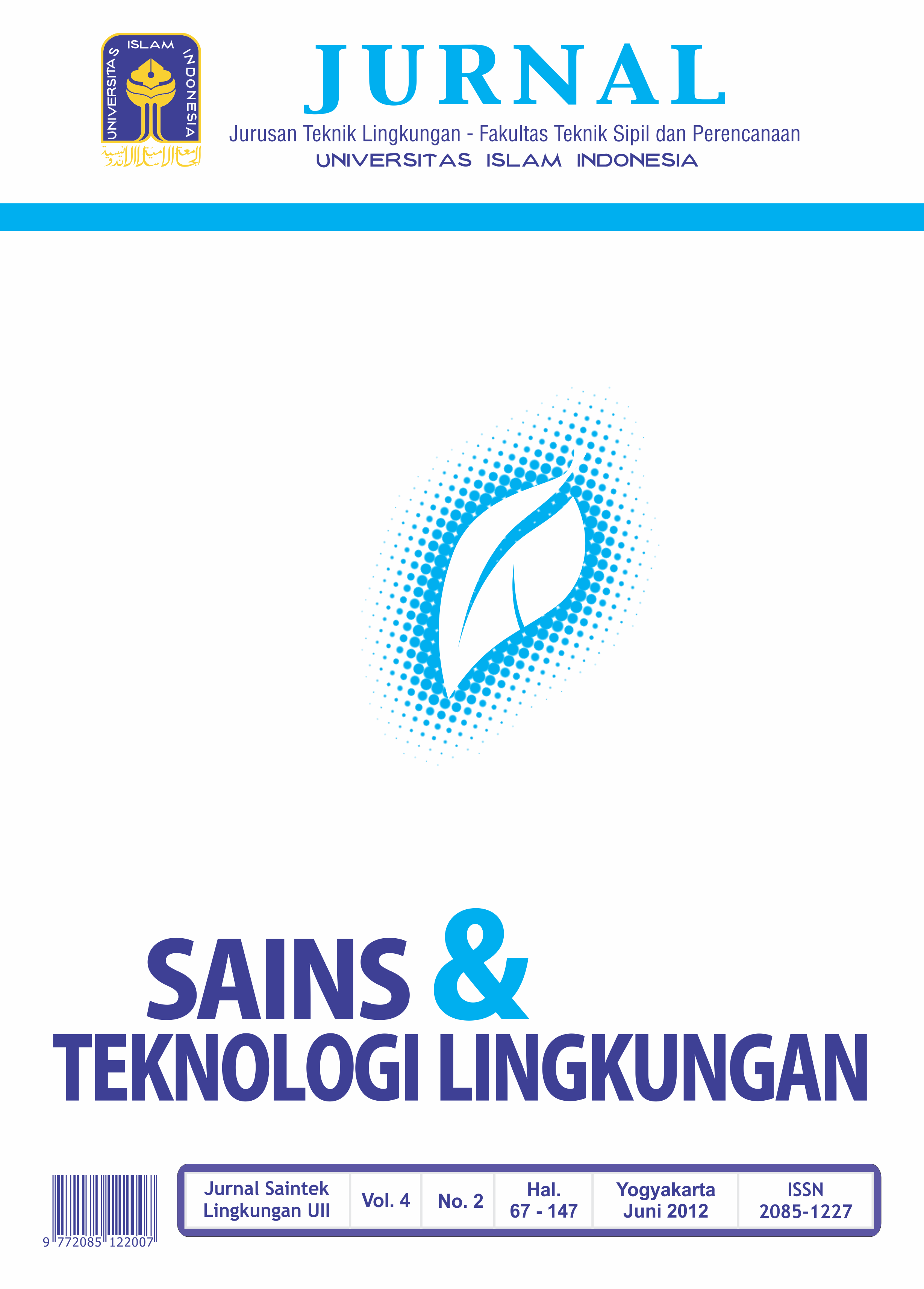Main Article Content
Abstract
This research have objective to develop and evaluate the performance of ceramic filter in using locally available material at Yogyakarta. Ceramic filter are made by pressing a mixture of clay, discarded pottery (grog) and combustible material (coconut fiber) into the molder. Curving processes are then applied to form tubular shape before firing it using kiln (1005°C). Filtration test were performed gravitationally by flowing well water into ceramic filter. Filtered water quality was complying with Indonesia drinking water quality standard (E.Coli and turbidity) although it has low filtration rate (0,461 L/Hr). The most optimum ceramic filter in turbidity and bacterial removal was composition number 10 {clay+coconut fiber 4,5%(w/w)+grog 5%(w/w)} that have average turbidity removal 88,2%, and average E. Coli removal 100%. N2 adsorption-desorption result on ceramic filter number 10 showed 0,04μm pore size, and 4,32m2/g pore surface area. The result from the XRD (X-ray diffractometer) indicates crystal structure of calcite and quartz on ceramic filter surface. Energy Dispersive X-ray (EDX) analysis showed Carbon compound as the most material constituent within the filter. Whereas micro’s photo using SEM (scanning electron microscopic) and TEM (transmitted electron microscopic) showed filter surface consists of stacked aggregates, separated by more randomly oriented particles.
Keywords
ceramic filter
coconut fiber
water treatment
material analysis
Article Details
License
Authors who publish with this journal agree to the following terms:
- Authors retain copyright and grant the journal right of first publication with the work simultaneously licensed under a Creative Commons Attribution License that allows others to share the work with an acknowledgement of the work's authorship and initial publication in this journal.
- Authors are able to enter into separate, additional contractual arrangements for the non-exclusive distribution of the journal's published version of the work (e.g., post it to an institutional repository or publish it in a book), with an acknowledgement of its initial publication in this journal.
- Authors are permitted and encouraged to post their work online (e.g., in institutional repositories or on their website) prior to and during the submission process, as it can lead to productive exchanges, as well as earlier and greater citation of published work (See The Effect of Open Access).
